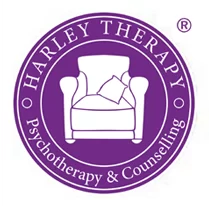What is EMDR Therapy? And Could It Help You?

By: Ged Carroll
by Andrea M. Darcy
EDMR stands for Eye Movement Desensitisation and Reprocessing.
An extensively researched and evidence-based psychotherapy (proven effective), it was originally designed to help people who had experienced trauma.
What is EMDR Therapy?
Also called ‘rapid eye movement therapy‘, EMDR changes the way that traumatic memories are held within the brain. The goal is to lower the distress such memories cause, leaving you more able to cope with your present-day life.
What sort of trauma are we talking about? Trauma has many forms. It might be something big you experienced or witnessed, such as a death, natural disaster, crime, or an accident. But there are other things that can also leave the brain traumatised that are less evident, such as abuse, bullying, neglect, and abandonment.
[Not sure if you did or didn’t experience trauma? Read or piece on “What is Psychological Trauma“.]
But the experience is in the past, why should it matter?
Even if you do your best to repress a traumatic memory, it is still there in your unconscious mind. Anything that makes you feel in danger again can trigger a whole host of symptoms that make life difficult.
These symptoms can be be mental (depression, anger issues) or physical (tension, headaches). Combined, they can make both relationships and daily life a challenge.
The Benefits of Eye Movement Therapy

By: Kiran Foster
The idea is that EMDR lessens the ‘charge’ your brain has around the negative past experience. The possible benefits this offers include:
- feeling calmer and more able to deal with life
- less traumatic memories and flashbacks
- being able to lead your life without constant worry you’ll be triggered
- improved confidence and esteem
- feeling less distracted and tense/hyper-vigilant
- lowered anxiety and panic
- feeling safer in the world
- being more present in relationships
- less loneliness and feelings of isolation
- just feeling happier with yourself and your life.
What can EMDR therapy treat?
While it was developed for helping people who had witnessed or experienced a severe trauma, it’s now shown that EMDR can help with many other issues.
So EMDR is effective for:
- abuse – sexual, physical
- addictions
- body dysmorphia
- complicated grief
- dissociative disorders
- post-traumatic stress disorder (PTSD)
- long-term pain
- panic attacks
- performance anxiety
- personality disorders
- phobias
- stress reduction.
What does an EMDR session look like?

By: Isengardt
“A therapist flashes a light in your eyes? You expect me to believe that is going to help my years of suffering?!”
Rumours abound about eye movement therapy.
But EMDR is actually a very carefully thought out, researched, and exact protocol of eight phases. Yes, you might be asked to move your eyes along to a light. But only as part of a bigger process.
Your life history
The first phase involves your therapist working at understanding your life history and what specific problems you are hoping to work with in your EDMR sessions.
What is the problem in your experience, what symptoms do you have that you feel come from that problem, and what behaviours stem from it that you’d like to change?
Explaining the process of EMDR therapy
You therapist will also explain the EDMR process to you in detail, and you’ll be able to ask any questions you have.
Preparation
The next phase involves preparation. You’ll learn ways to deal with things that upset you, including relaxation techniques.
The EMDR process
Finally, you’ll get into the three phrases that are the actual EMDR process. At the beginning, you’ll be asked to select a visual picture of the distressing event you’ll be working on. You’ll then identify a negative belief that comes from this event, as well as a positive statement you’d prefer to believe. You’ll also be asked to notice physical sensations that the beliefs bring for you, such as an upset stomach or tense muscles.
The therapist then guides you through a series of eye movements and/or other forms of stimulation like taps or tones. You will do a few ‘sets’ like this, usually lasting less than thirty seconds, and after each time you’ll check in to see how you now feel. Most people find their stress lowers with each cycle.
Closure
The final phase is closure, and you are offered a chance to relax again, using those exercises you learned earlier.
If you are uncomfortable talking too much about your past because that in itself causes you distress, don’t worry. EDMR can involve far less ‘talking things through’ than other forms of psychotherapy and is quite experiential. The therapy will still be effective if you prefer to just speak in general terms over going into details of the upsetting past event.
Would you like to try EMDR therapy? Harley Therapy connects you with therapists from its central London clinics as well as across the UK and online via the Harley Therapy Platform.




